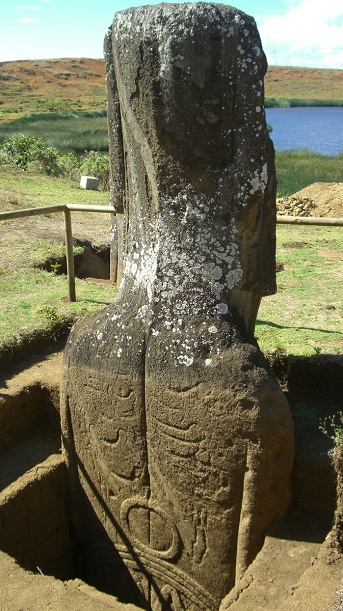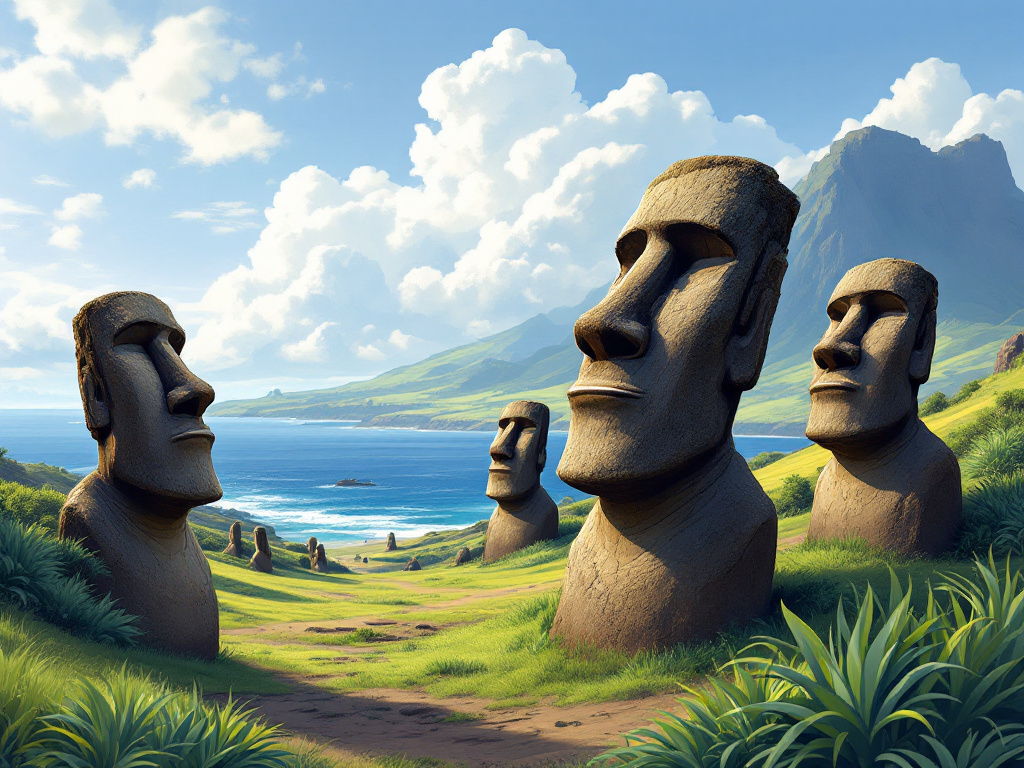Easter Island, also known as Rapa Nui, is a small piece of land in the Pacific that holds one of humanity's greatest enigmas: the colossal stone heads, the Moai. These monoliths, which tower majestically along the island's coast, have fascinated scholars and adventurers for centuries. But what is the true story behind these sculptures? And how can we analyze this mystery with a rational and logical approach?
The Origins of the Moai
The Moai were carved between 1250 and 1500 AD by the Rapanui, the island's original inhabitants. These giants of stone, which can reach over 10 meters in height and weigh 80 tons, were made using volcanic stone from the Rano Raraku crater. But how did the Rapanui manage to transport these enormous statues across the island?
The Transportation of the Moai: Theories and Evidence
One of the most credited theories is that of the "walking" statues. According to this hypothesis, the Moai were made to oscillate back and forth using ropes and levers, allowing them to "walk" slowly towards their final destination. This theory has been supported by practical experiments conducted by archaeologists such as Terry Hunt and Carl Lipo, who have demonstrated the feasibility of this method.
Another theory suggests the use of logs as rollers to roll the statues. However, this hypothesis is less supported by archaeological evidence, as the island has few forest resources and the logs needed for this method would have been difficult to obtain.
The Decline of the Rapanui Civilization
One of the most fascinating and tragic aspects of Easter Island's history is the decline of its civilization. Many scholars have hypothesized that excessive deforestation and subsequent soil erosion led to an environmental crisis that decimated the population. This theory is supported by ecological studies that show a dramatic change in the island's landscape over the centuries.
However, recent archaeological and anthropological research suggests that the decline may have been caused by a combination of factors, including internal conflicts, diseases introduced by Europeans, and the kidnapping of much of the population as slaves in the 19th century.
What Lies Beneath Those Heads?
One of the most intriguing aspects of the Moai is what lies beneath the surface. The existence of bodies under the heads of the Easter Island Moai has been known for a long time, but it only received widespread attention in the 20th century.

Source - University of california
Discoveries and Confirmations
- 1914: The first documented archaeological expedition, led by Katherine Routledge, discovered that some Moai had bodies buried beneath the ground level.
- 1955-1956: Thor Heyerdahl, a Norwegian explorer, confirmed during an expedition that many of the statues were partially buried in the ground due to erosion and soil displacement over the centuries.
- 2009-2011: The Easter Island Statue Project (EISP) conducted large-scale excavations, revealing the full extent of the bodies of several Moai, uncovering incisions and details not visible on the surface.
Why Were the Bodies Hidden?
Soil erosion and sediment deposition gradually buried the lower parts of the statues. The local populations knew of their existence, but the rest of the world became aware of this reality only with archaeological excavations. Today, we know that the Moai are not just giant heads, but complete statues, carved from a single block of volcanic tuff and up to 10 meters tall.

Source - University of california
Types of Incisions Found on the Bodies
The bodies of the Easter Island Moai feature incisions and symbols carved on the surface, especially on the back. The excavations conducted by the Easter Island Statue Project (EISP) between 2009 and 2011 revealed that many of these incisions had been covered by soil for centuries. Here are some of the types of incisions found:
- Petroglyphs and Ritual Symbols: Some Moai have incisions of motifs related to Rapa Nui culture, such as the birdman (Tangata Manu), which refers to an ancient cult of the island.
- Construction-Related Marks: Symbols and inscriptions have been found that may have been made by the artisans who carved the statues.
- Abstract Decorations: Lines and geometric shapes that may have religious or tribal meanings.
- Natural Erosion Marks: Some of the incisions have been eroded by time, making it difficult to interpret some details.
The Mystery of the Moai: A Rational Analysis
To fully understand the mystery of the Moai, it is essential to adopt a multidisciplinary approach that combines archaeology, anthropology, ecology, and history. Archaeological evidence tells us a lot about the sculpting and transportation techniques of the statues, while ecological studies help us understand the environmental context in which the Rapanui lived.
Additionally, historical testimonies and the oral traditions of the Rapanui themselves provide valuable insights into their culture and the meaning of the Moai. These stone giants were not just works of art, but symbols of power, spirituality, and cultural identity.
The mystery of the Easter Island heads continues to intrigue and fascinate. However, through a rational and logical approach, we can unveil many of the enigmas surrounding these extraordinary sculptures. The Moai are not just carved stones, but testimonies of a complex and fascinating civilization that has left a lasting legacy.
Visiting Easter Island and immersing yourself in its history is an unforgettable experience that reminds us of the greatness and fragility of humanity. Each Moai tells a story, and each story brings us a little closer to understanding this timeless enigma.








Leave a Comment